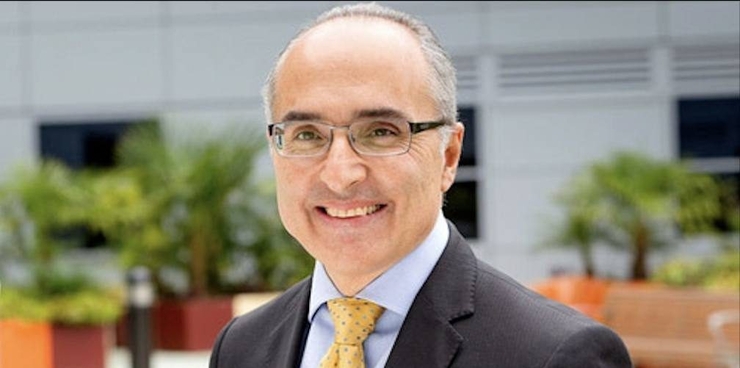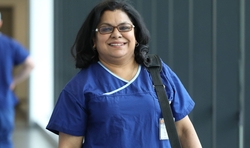A new study has confirmed the importance of a valuable tool for diagnosing a post-surgery threat for breast cancer survivors, who are living longer than ever due to advances in treatment.
Lymphoedema is one of the potential long-term complications for women who successfully battle breast cancer – it can lead to pain, infection, limited arm function and overall poor quality of life.
Doctors at Sydney Adventist Hospital have made a major contribution to research that showedbioimpedance spectroscopy (BIS) can identify a fluid in patients who will develop the condition, also known as BCRL.
"It's important to identify patients in the early stages of BCRL, before it becomes a chronic condition, but this can be challenging," said Clinical Associate Professor Michael Hughes, a surgical oncologist at New South Wales' largest private hospital – also called the San.
"In the past, we would wait until there are visible changes in the arm in order to diagnose lymphoedema. However, before this, sub-clinical disease is occurring in extracellular fluid, which we can't see. BIS allows for early and accurate identification of this fluid."
Along with San colleaguesProfessor John Boyages and Dr Nicholas Ngui, he played a key role in helping Australian women to take part in a large international trial comparing BIS with tape measure-triggered compression intervention (TM).
BIS is a non-invasive technique that measures how the flow of a low-strength electrical current is slowed by fluid in the body.
The randomised-controlled trial enrolled new breast cancer patients undergoing mastectomy or lumpectomy and some form of lymph node surgery, assessing them over a three-year period.
Early diagnosis of subclinical BCRL with short-course compression therapy has been shown to improve outcomes.
"BIS patients triggered an intervention at a lower rate than TM patients and provided a more precise identification of patients likely to benefit from an early compression intervention," A/Prof Hughes said.
"Results from the three-year study showed results consistent with previous much smaller studies that were limited because of the small sample sizes. BIS screening is a valuable tool for the prevention of BCRL and should be a standard approach for a prospective BCRL surveillance."
Meanwhile, San breast cancer surgeon Dr Sandra Krishnan is urging women to get checked as healthcare facilities reopen to non-emergency patients following the relaxation of COVID-19 restrictions.
Even before the pandemic, Australia's cancer screening rates had been dropping – in January-June 2020 there were nearly 145,000 fewer mammographs (which takes the image known as a mammogram) performed than in previous years.
"We know from pre-pandemic data how many breast lesions are detected in a day, so after this significant slowdown in screening, it's crucial that we catch up with as many women as possible," Dr Krishnan said.
"The San offers an in-depth, personalised and very advanced service in breast imaging. We have a rapid-access model. All women are seen by experts, results are available on the same day, and immediate plans are made for further investigations.
"Our outpatient cancer clinic has received the highest ratings in the Bureau of Health Information patient survey for three consecutive years," she said.
Read more: Global recognition for San's cancer services
Read more: Australia-first AI system keeps patients safe
Next Safety And Quality:
10/5/2022 San beats COVID challenge to pass tests
Previous Safety And Quality:
13/4/2022 Local vs general: New approach for prostate pain relief
![[APHA]](/images/logo_apha.svg)

